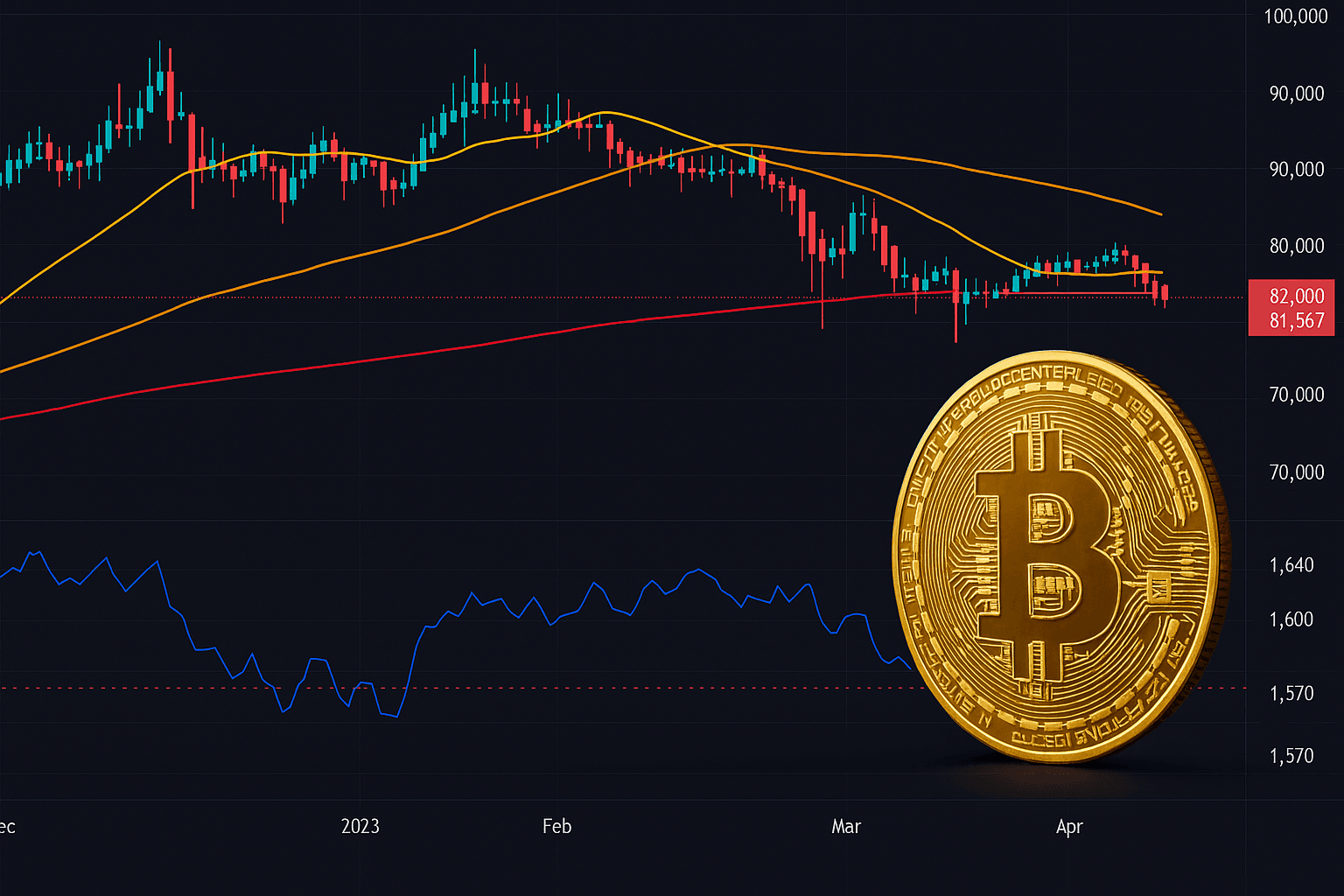Bitcoin’s Slip Below Key Moving Averages: A Concern for Traders and Investors
The cryptocurrency market has been a rollercoaster ride for investors and traders alike. Among all the digital currencies, Bitcoin (BTC) has been leading the charge, setting new all-time highs and reaching unprecedented heights. However, the Bitcoin price has recently dipped below some key moving averages, triggering fresh concerns among traders and investors.
Technical Analysis
From a technical standpoint, the 50-day and 200-day moving averages (MA) are crucial indicators for Bitcoin’s price trend. When the price is above these averages, it is considered bullish, while a bearish trend is signaled when the price falls below them. Recently, Bitcoin’s price has slipped below both the 50-day and 200-day moving averages, indicating a potential bearish trend.
Impact on Traders
For short-term traders, this price action can create opportunities for profit. A bearish trend may lead to further price declines, allowing traders to sell Bitcoin at higher prices and buy it back at lower prices. However, it’s essential to remember that cryptocurrency trading involves significant risk, and traders should always use risk management strategies to minimize potential losses.
- Stop-loss orders: Set a predetermined price at which to sell Bitcoin to limit potential losses.
- Position sizing: Determine the amount of capital to allocate to a single trade.
- Diversification: Spread investments across multiple assets to reduce risk.
Impact on Investors
Long-term investors may view this price action differently. A dip below moving averages does not necessarily mean a bear market is imminent. Bitcoin’s price has experienced similar dips in the past, only to recover and set new all-time highs. Patient investors may see this as an opportunity to buy Bitcoin at a discount.
Global Implications
The price of Bitcoin affects not only individual traders and investors but also the broader financial markets and the global economy. Bitcoin’s correlation with traditional assets like stocks, bonds, and gold can lead to ripple effects in these markets. For instance, a significant Bitcoin price decline could lead to increased volatility in the stock market.
Conclusion
In conclusion, Bitcoin’s price slip below key moving averages is a cause for concern for both traders and investors. While short-term traders may see this as an opportunity to profit from a potential bearish trend, long-term investors may view it as a chance to buy Bitcoin at a discount. Regardless of one’s investment strategy, it’s essential to remember that cryptocurrency trading involves significant risk and to always use risk management strategies.
Furthermore, the global implications of Bitcoin’s price movements cannot be ignored. The correlation between Bitcoin and traditional assets can lead to ripple effects in these markets. As such, it’s crucial to stay informed about the latest developments in the cryptocurrency market and their potential impact on the broader financial markets and the global economy.





